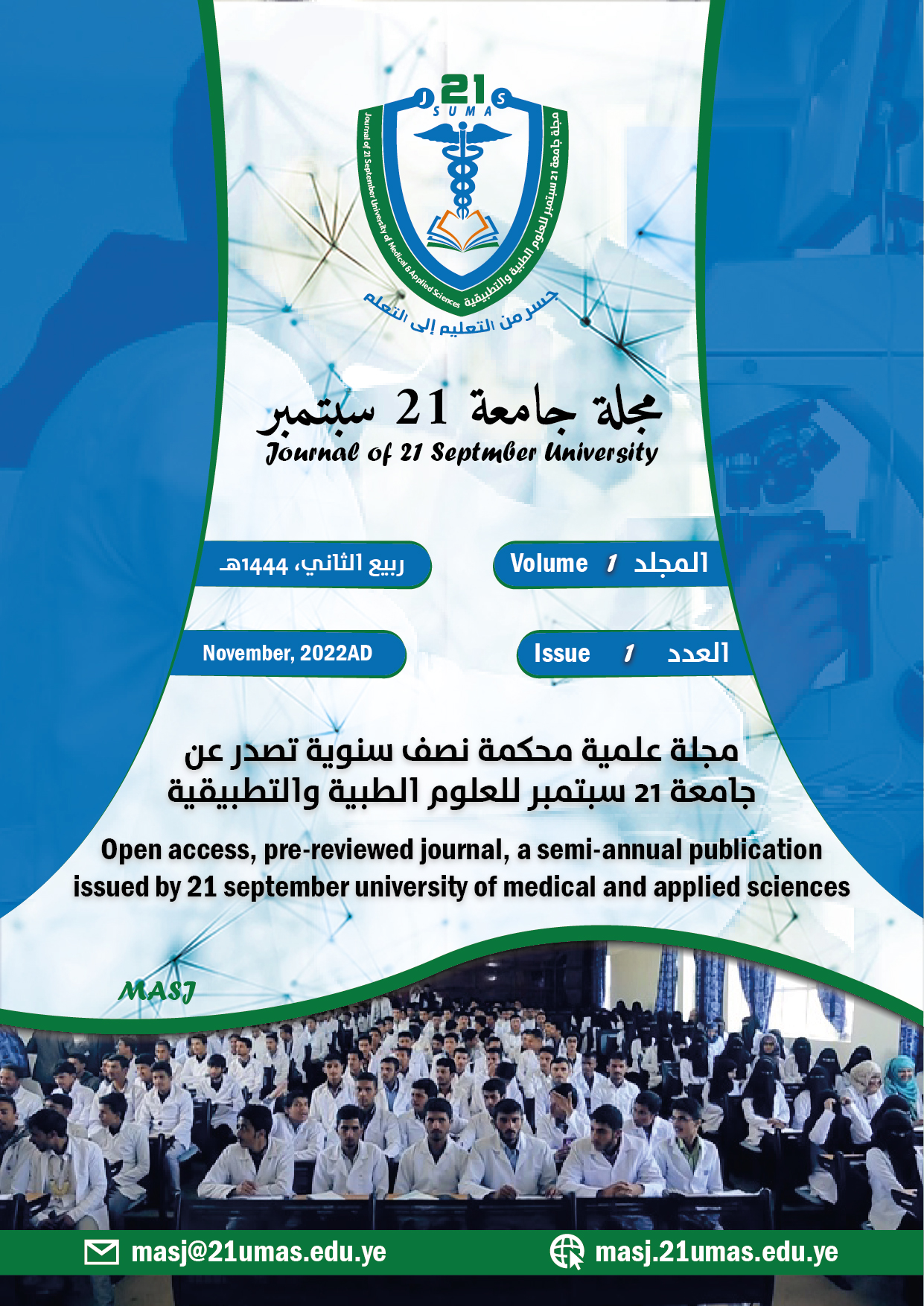Glucose-6-phosphate Dehydrogenase Deficiency and Hemoglobinopathy among Patients of the Yemeni Society of Thalassemia and Blood Genetic Disorders in Sana’a, Yemen
Keywords:
Glucose-6-phosphate Dehydrogenase (G6PD), Hemoglobinopathy, Sickle cellAbstract
Glucose-6-phosphate dehydrogenase (G6PD) deficiency and hemoglobinopathies such as sickle cell anemia (SCA), sickle cell trait (SCT), and thalassemia are the most common congenital causes of hemolysis. The study aimed to determine the prevalence of G6PD deficiency in hemoglobinopathy patients and its effect on RBC indices.
Materials and methods: This case-descriptive study was carried out on a total of 100 hemoglobinopathy patients (51 males and 49 females) aged between 3 and 38 years. They attended the Yemeni Society for Thalassemia and Genetic Blood Disorders (YSTGBD) in Sana’a, Yemen, during the period between January and February 2021. Hb electrophoresis and/or HPLC methods were used to categorize them as sickle cell anemia (HbSS; n = 70), sickle cell trait (HbAS; n = 12), HbS/thalassemia major (n = 12), and HbS/thalassemia minor (n = 6). Five milliliters of venous-EDTA blood were collected from each patient and used to determine G6PD activity and the complete blood count (CBC). Data were analyzed using SPSS version 26 software.
Results: G6PD deficiency was detected in 29 (29.0%) of patients with hemoglobinopathy, of whom 16 (16.0%) were males and 13 (13.0%) were females. G6PD deficiency was discovered in 20 (20%), 3 (3%), 5%, and 1% of patients with HbSS, AS, S/β-thalassemia major, and minor hemoglobinopathies, respectively. In G6PD-deficient patients, G6PD activity significantly correlated positively with RBC (p= 0.048), MCH (p= 0.040), and MCHC (p= 0.002).
Conclusion: The prevalence of G6PD deficiency was high among hemoglobinopathy patients, particularly those with sickle cell anemia (SCA), which may contribute to a further increase in the hemolysis of RBCs. Therefore, screening hemoglobinopathy patients for G6PD levels is recommended during diagnosis and treatment.
Downloads
Published
How to Cite
Issue
Section
License
Copyright (c) 2023 Journal of 21 September University of medical and applied sciences

This work is licensed under a Creative Commons Attribution-NonCommercial-NoDerivatives 4.0 International License.


